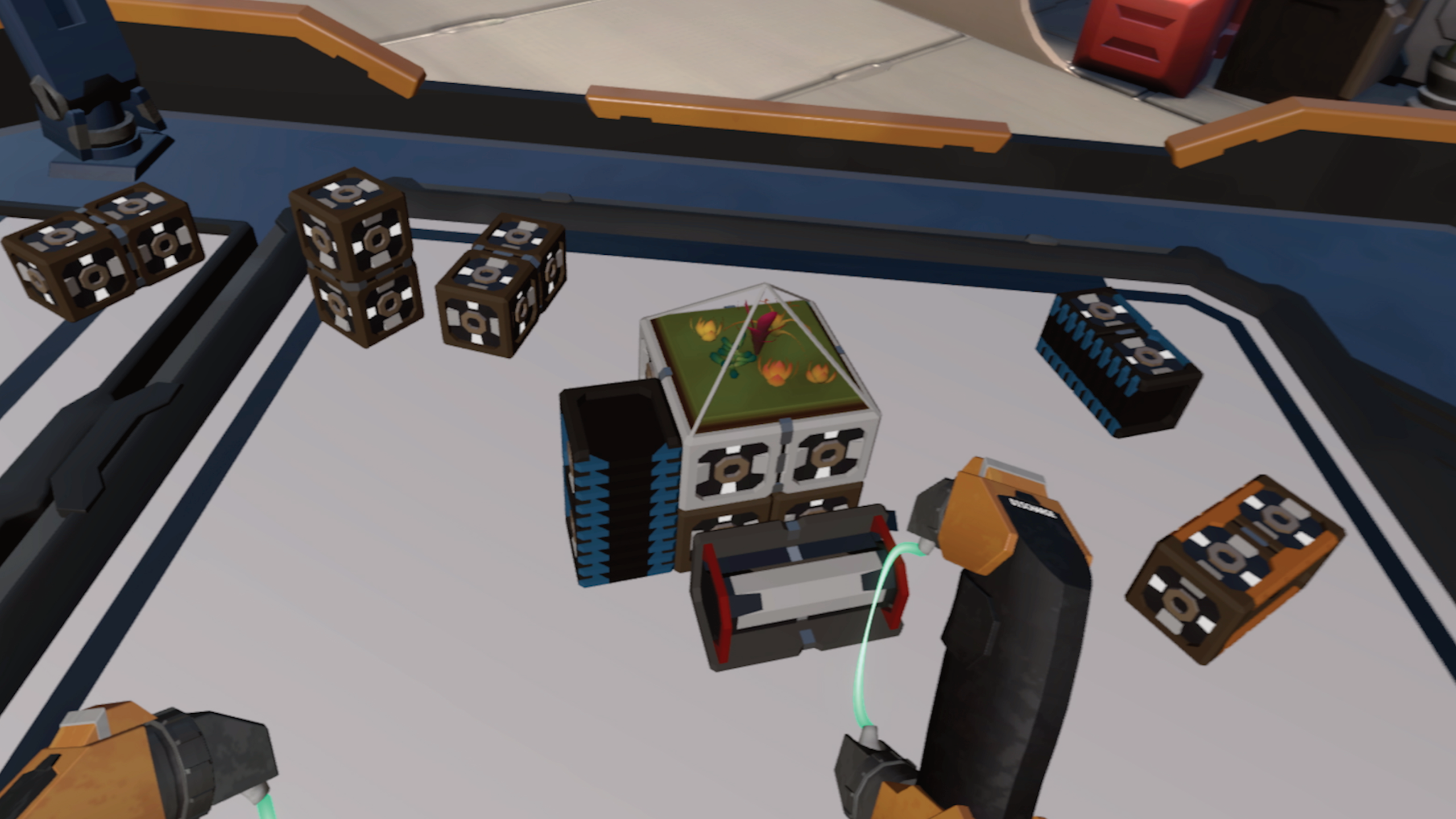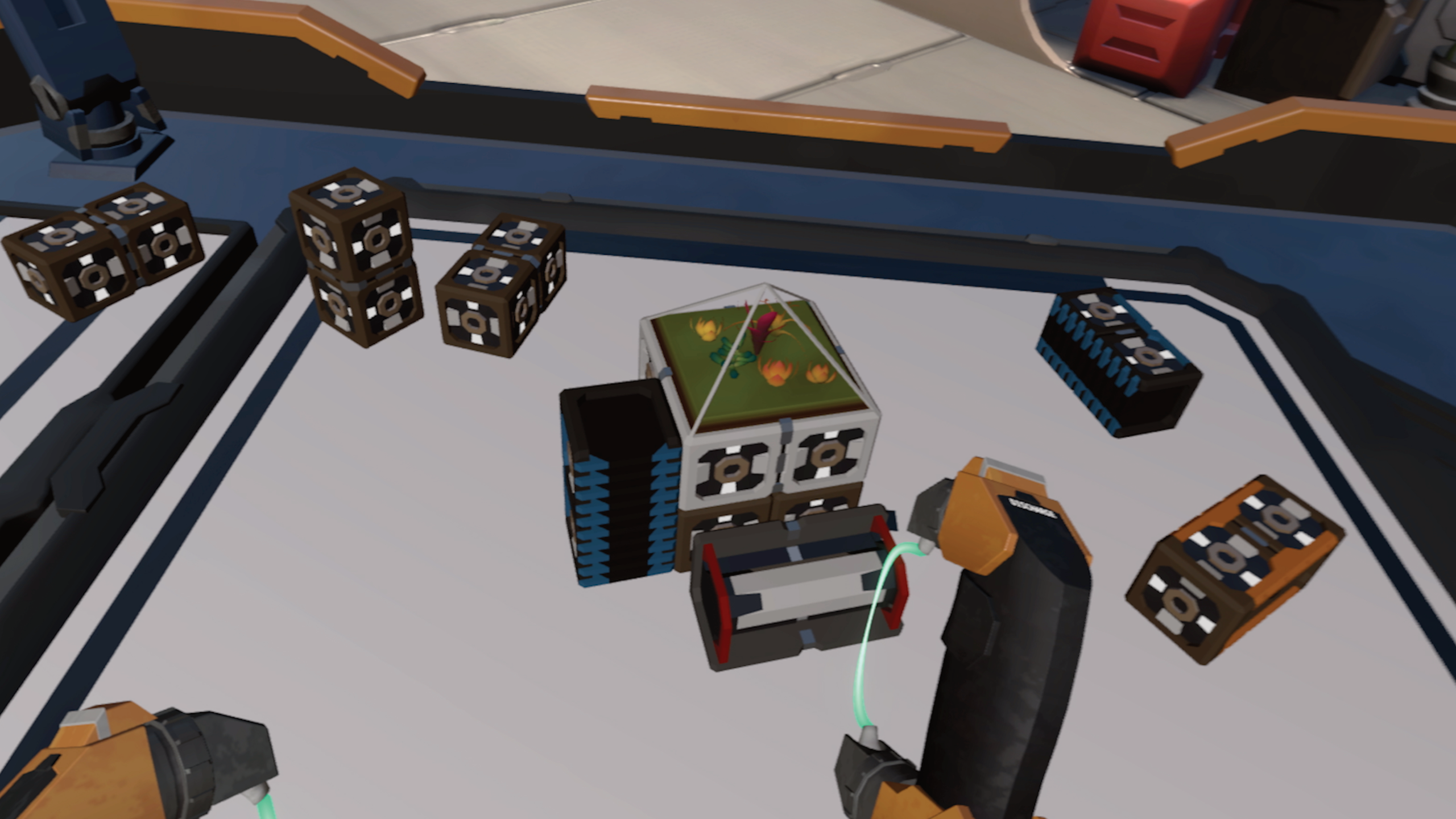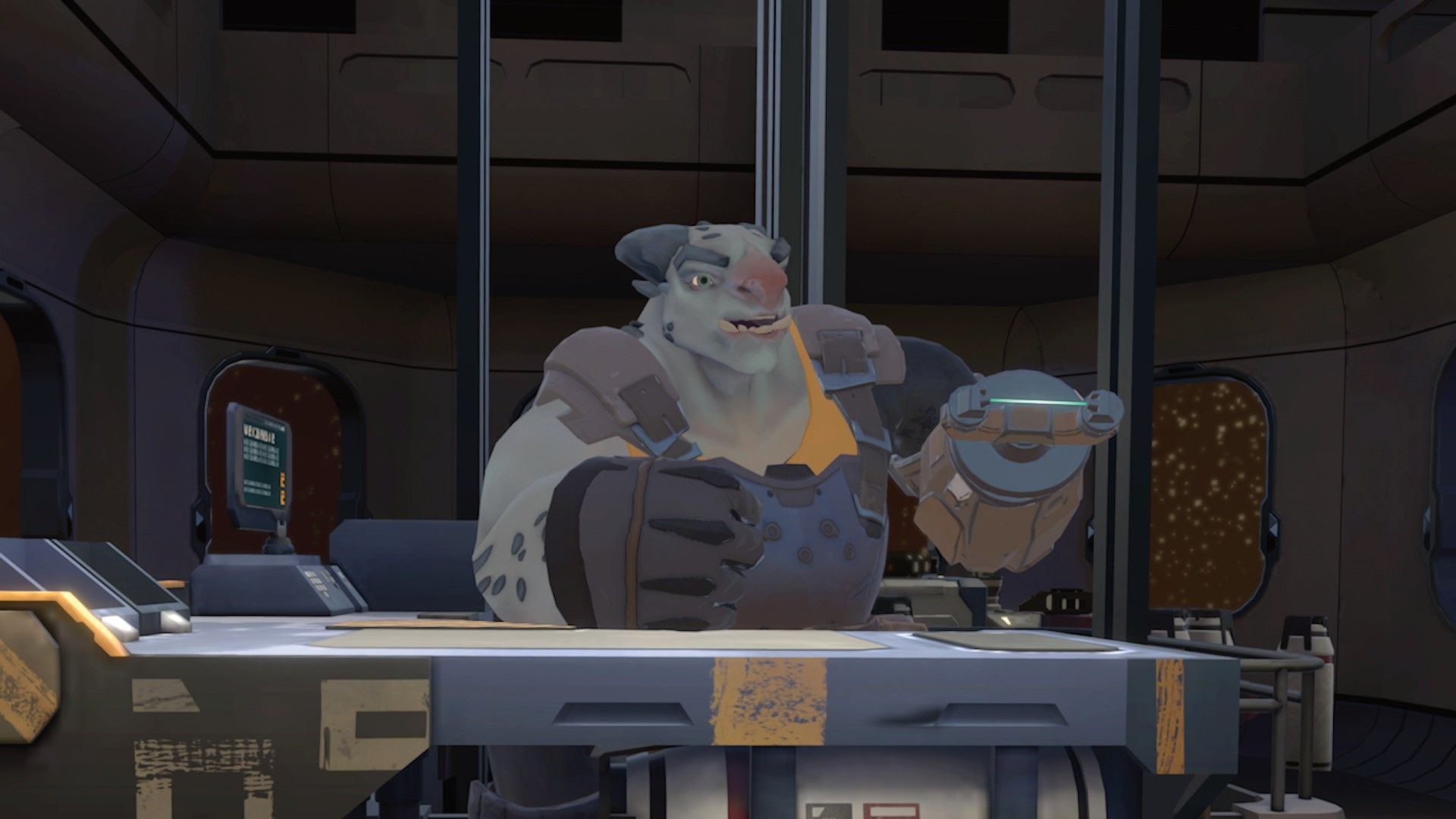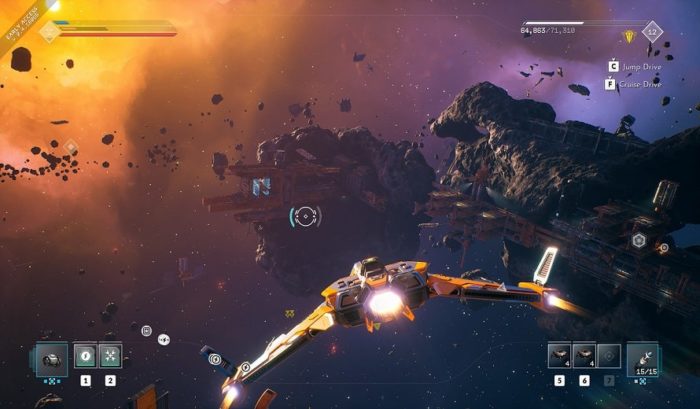
What if you built a Lego so good it would end all wars? This is essentially the premise of Arcsmith, a VR puzzle game that tasks you with assembling tiny machines that have a big purpose. Arcsmith’s 20-some-odd challenges are deceptively simple. Every machine is made up of just a small handful of the same, single-purpose building blocks. In order to assemble them correctly however, you’ll need to understand complex mechanical processes like power balancing, heat distribution, and energy conversion. Arcsmith manages to teach you these concepts in a digestible way, and like any good puzzle game, your vocabulary and knowledge base grows as you progress until you’re eventually able to design outrageously complex systems. It’s also a geometry puzzle that tests your ability to use space efficiently, and for that reason it could only ever work in VR. While Arcsmith’s inventive block-building puzzles and immersive controls kept me hooked, a general finickiness and inconsistency in the way certain parts operate hold it back from being a must-play title.
An arcsmith is essentially a freelance space engineer that designs tools for anyone that has the credits to pay. You play as a novice arcsmith under the tutelage of an alien master teacher named Korith Dinn. Korith has abandoned the craft after a traumatic experience he is reluctant to talk about, but as your skills as an arcsmith develop, your talent inspires him to open up about his past and eventually return to arcsmithing in order to right his wrongs. The story moves forward through short cutscenes after you solve each puzzle, and while it isn’t particularly complicated or thematically dense, it definitely serves its purpose by steadily moving the plot forward. Each solution gets you another step closer to understanding Korith’s story and discovering what made him quit being an arcsmith. WIthout spoiling the end, it has an anti-imperial message and a strong conclusion that has the perfect scope for a game this size. It’s nothing too profound, but I still found it narratively satisfying in a way few puzzle games are.
Related: Cris Tales Review – A Time Travel Adventure Held Back By The Past
At the beginning, you’ll be designing simple machines like radios and medical scanners that teach you the core concepts of the game. Every machine starts with a power source that attaches to a core component exclusive to that particular machine. Of course, it's never as simple as simply slamming a battery onto a radio and calling it a day. Powered components generate heat that has to be dispersed with radiators, but power can not pass through radiators, so you have to find a way to position components such that power can move through them and heat can move out. Additionally, a battery supplies a constant power load that might not be suitable for every device. If a machine only needs three power but your battery supplies four, you’ll need to add in a discharge to absorb the additional energy and balance the load. Dischargers produce additional heat that must then be dispersed, and you can already see how complicated these systems can become, especially later on when you’re working with alternative energy like solar, crystal, and heat conversion.

I love the way that Arcsmith’s puzzles develop in complexity across its two dozen levels. There are only one or two times when I experienced a serious difficulty spike that really tripped me up. For the most part, I was able to take the lessons I learned from each machine and apply those concepts to the next. The puzzles build on themselves in a way that reminds me of The Witness, and mastering the mechanics is incredibly satisfying.
Unfortunately, not every puzzle is as tight as I would have liked. The flow of energy isn’t always consistent or predictable, which can lead to situations where things seem like they would absolutely work on paper, but in practice they just don’t. If you put two components on either side of a four-power battery, for example, there’s no guarantee that each component will receive two power from it. This resulted in a couple of puzzles where I had to keep adding more and more pieces until the thing eventually worked, despite the fact that I didn’t really understand why it worked. It's not very satisfying to solve a puzzle when you don’t understand the solution, and I think Arcsmith has a few too many instances of trial-and-error leading to solutions that work, but don’t make any sense.
This is especially true in the game’s final bonus puzzles. The last level in the main campaign introduces a new component that converts heat into power. It’s a simple puzzle to solve that teaches you the basics of this complicated tool, but after the credits roll you’ll be presented with the hardest challenges in the game. The way that heat radiates between objects is completely nonsensical to me, and I was unable to finish two of these bonus puzzles after hours of trying. I decided it was time to give up when I ran the machine overpowered — but not overheated — for five full minutes, turned it off and turned it back on, and it almost immediately overheated and blew up. There may be a reasonable explanation for why this happened, but it felt like trying to solve a puzzle that didn’t stick to its own rules, and I just had to stop trying.

Overheating is another sore spot for me. If you try to run a machine without building in a way to disperse the heat, the first component to overheat will eventually blow off and leave behind a puff of smoke. It’s a cool effect at first, but once I got in deep with some of the harder puzzles I started to resent having to snap a piece back into place every single time it blew off. Machines have a maximum part limit of 30, and it can be incredibly frustrating to remember where a specific component was supposed to go when it pops off. Once a part overheats, it often causes other parts to become unattached as well. Sometimes they still look attached though, and unless you get close enough to see that there’s a fraction of an inch between them, you might not even notice they aren’t connected, which can lead to frustrating situations where nothing's working and you don’t know why. I wish the machine would just turn off instead of blowing up, even though it's cool to see the parts fly.
Snapping pieces back on wouldn’t be a big issue if the controls were more precise, but Arcsmith’s biggest flaw is its finicky controls and buggy attachments. There are just so many frustrating things about controlling and manipulating objects in this game. When you try to put two parts together, they’ll magnet to each other and snap together at designated connection points. They don’t always snap together how you’d like though, and they often won’t even square up, making it nearly impossible to connect additional parts without eventually ending up with connection points that don’t align. When you want to take things apart, you have to grab the two objects that are connected and pull. This can be nearly impossible once your machine has enough parts on it, and I ended up taking the whole thing apart by accident when I was just trying to take one piece off of it countless times. The precision and fine motor skills you need in order to manipulate these building blocks in 3D just isn’t quite there on the Quest 2. I can’t say whether it's a hardware limitation or a flaw in the game, but it’s incredibly frustrating either way.
In addition, things get stuck all the time. Sometimes components just won’t come apart and sometimes pieces get stuck together when they aren’t even connected. I had to restart from the beginning of quite a few puzzles because a piece would glitch out and ruin the whole thing. It’s not always easy to remember how you put things together, so having to restart because of a bug is pretty frustrating.
Despite the hindrances, I did manage to complete Arcsmith’s main story in one sitting. Every time I thought about taking a break, the satisfaction of a successful solution pushed me right into the next challenge. I loved the puzzles that required me to build the entire system within the confines of a limited space because they really tested my understanding of the mechanics and my ability to efficiently assemble a working machine. When the controls work, it's easy to get into a flow state of grabbing and snapping parts together that legitimately made me feel like a master inventor. The best puzzle games give you the sense that you learned something while challenging your problem solving abilities, and I felt like Arcsmith did that wonderfully without any time wasted. It’s a brisk 2-3 hours, depending on your aptitude, and well worth the time — provided you're willing to put up with some pretty frustrating controls here and there. And if you manage to make it through those bonus puzzles, drop me a line so I can dub you the truest Arcsmith.
A review code for Arcsmith was provided to TheGamer for this review. Arcsmith is available on Oculus Quest and Oculus Quest 2.

Next: Chernobylite Review: Green Light Special




